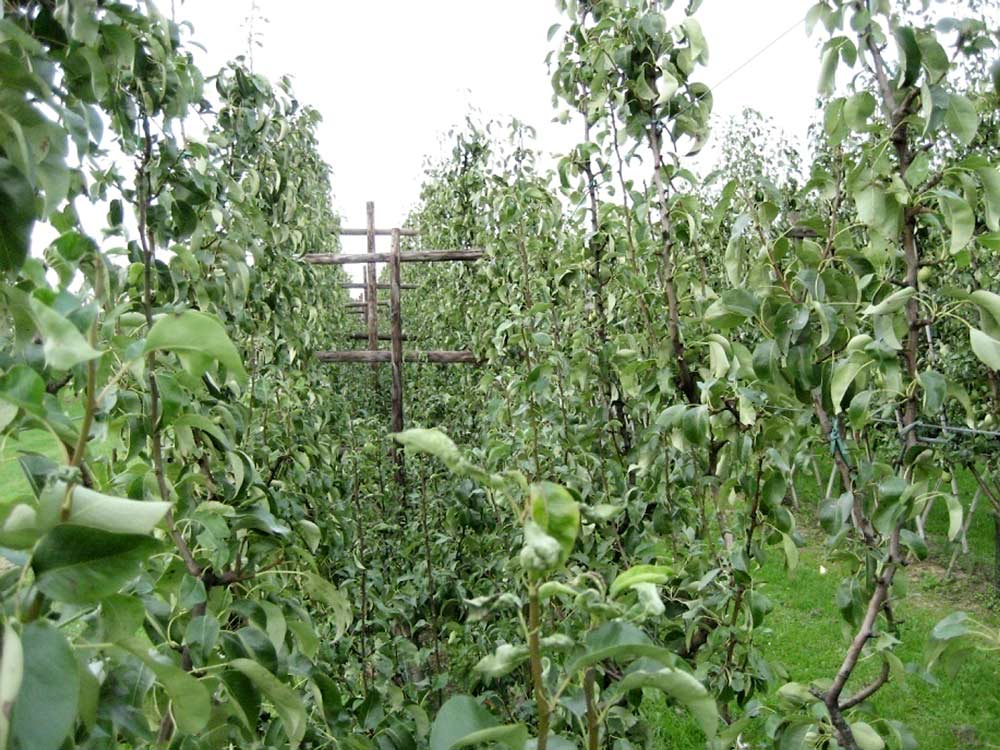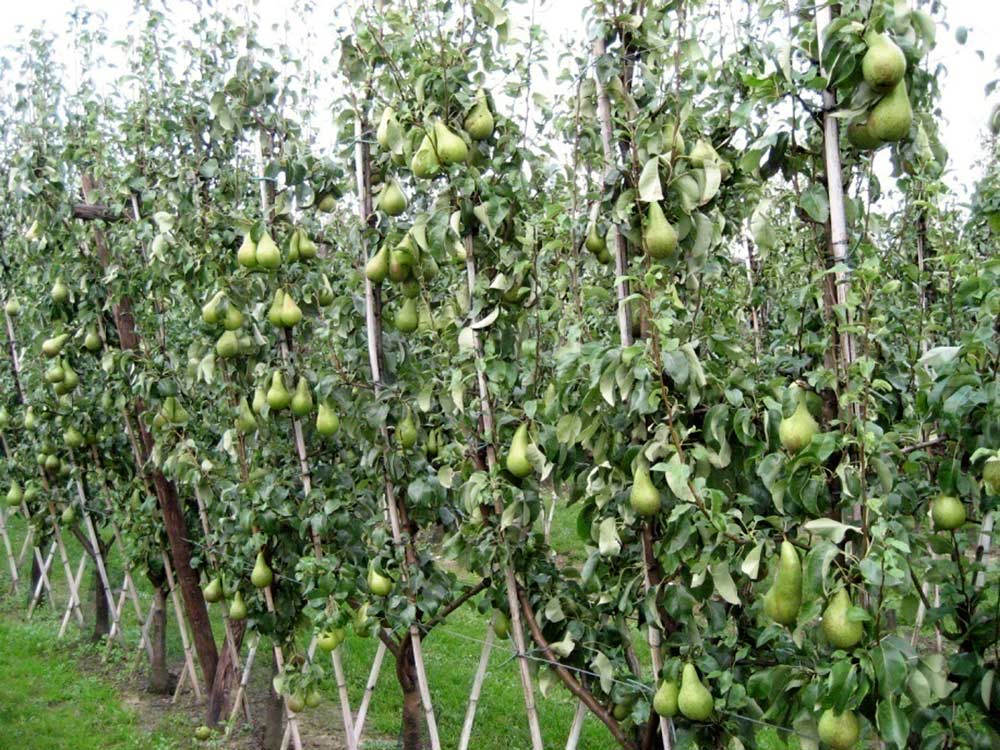
The Drapeau style orchard system showed the highest financial return during Belgian trials of Conference pears. (Courtesy Jef Vercammen/Proeftuin pit- en steenfruit)
Researchers from around the world presented their latest findings regarding cold-hardy rootstocks and new varieties during the Interpera conference in Wenatchee, Washington, in June.
Unlike apples, pears lack a true dwarfing rootstock that allows growers to more easily produce compact, high-density orchards better suited for mechanization, uniformity and higher yields.
Warmer areas in Europe can use quince rootstocks, but the quince rootstocks don’t tolerate the cold winters of production areas in Canada and the United States — the Pacific Northwest, the Northeast and Michigan.
Jef Vercammen, director of a Belgian fruit growing research station and Interpera board member, outlined the common rootstocks used throughout European growing areas and Belgian trials on four rootstocks for Conference, the most common European pear variety.
He concluded that Pyrodwarf, Pigwa and S1 rootstocks were too vigorous, Quince C and Quince Adams are susceptible to frost damage, Quince H and C 132 have similar vigor to that of Quince C but produce better fruit size and that Quince Eline yields smooth pears.

The V-trellis style orchard system showed the second highest financial return during Belgian trials of Conference pears. (Courtesy Jef Vercammen/Proeftuin pit- en steenfruit)
Todd Einhorn, a former Oregon State University tree fruit physiologist now at Michigan State University, discussed trials in Germany and Oregon of some cold-hardy versions of quince and Amelanchier rootstocks.
His work evaluating Amelanchier clones — bred by Michael Neumüller of the Bavarian Fruit Center in Germany — resurrected studies from 1951 and 1984, he said.
The rootstock shows promise for dwarfing qualities, production of large fruit and cold-hardiness. New trials established in 2016 and 2017 will also evaluate interstems, but he doesn’t expect results for another few years.
Meanwhile, the world has a lot of pear varieties, but many countries still rely on just a few stalwarts for the bulk of their production. In the United States, varieties Bartlett, d’Anjou and Bosc account for 98 percent of the fresh pears.
Conference pears make up 42 percent of the European production, a market share that has spiked in the past 10 years as stricter laws on the use of growth regulators make others, such as Spanish variety Blanquilla, too expensive to grow.
Stefano Musacchi, a tree fruit endowed chair at Washington State University and scientific supervisor of an Italian breeding program, told the audience that the world’s most common pear varieties are decades, even centuries, old.
The Bartlett, called Williams in Europe, was released in 1765. “We are still dealing with this variety,” he said to a chorus of chuckles.
But researchers are working on it. Musacchi described four varieties from the University of Bologna (see “Newer pear varieties” above), where he still supervises breeding.
Einhorn discussed the work with Gem, a U.S. Department of Agriculture variety that’s precocious, nonrusseting, fire blight-tolerant and edible off the tree or after postharvest ripening. Numerous others are in the works all over the globe.
Part of the problem — in New Zealand, at least — is convincing retailers and shoppers to look for more diversity, said Lester Brewer, breeder and project manager for Plant and Food Research New Zealand.
He showed contrasting photos of an assortment of pears nearly every color of the rainbow and pictures of store shelves completely pale green and brown.
“Overall, we have fruit in a great range of shapes, color and flavor,” he said, “… and when you compare it to a shelf in a New Zealand supermarket this year, there’s a big difference.”
Musacchi and Vercammen also discussed different growing systems that reduce vigor and boost yield to give growers techniques they can use now without waiting for new rootstocks and varieties.
Vercammen compared seven growing systems by production, cost and profit standards. Drapeau, a single-row system with nearly 1,500 trees per hectacre planted at 45-degree angles and four branches on each side, showed the best financial results in the trials, though Vercammen was careful to note that results will inevitably vary in each orchard.
—by Ross Courtney






Leave A Comment